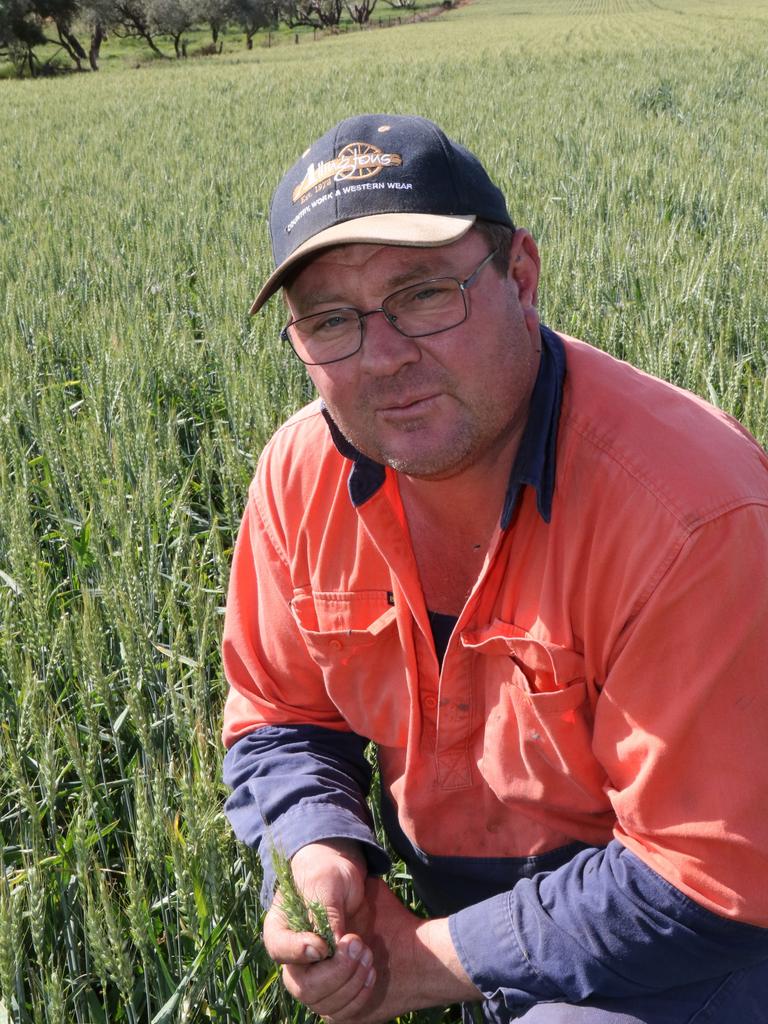‘Double average yields’: Millewa farmers’ ‘exceptional’ crops
After years of below-average seasons, Millewa farmers are heading for an “exceptional”, albeit delayed, harvest.
Farmers in Victoria’s Millewa region say wet weather will delay this year’s harvest, but the rain has delivered exceptional crops after years of below-average seasons.
Wheat and barley crops across the normally-dry region could achieve yields almost double the long-term average ahead of an expected late-November harvest.
Werrimull farmer Ron Hards said he was looking at “excellent” wheat and barley yields, and an above average lentil crop.
Mr Hards, who grows one-third legumes, one-third cereals and one-third hay across a 3000ha property, said his wheat and barley had “three tonne possibilities”, an uncommonly high yield for the region.
The yields were expected despite heavy disease pressure from stripe rust, a fungus that thrives in cool and wet conditions.
“This is the worst outbreak of stripe rust I’ve seen in the Mallee for a long time.
“We haven’t been doing preventative treatments for 10 years, because it has been that long since we had a reasonable outbreak,” Mr Hards said.
The lentil crop had also been affected by weather, with many plants knocked down in strong winds, but overall yields wouldn’t be badly affected, he said.

Elders Mildura senior agronomist Jack Daniel said Mr Hards wasn’t the only grower looking at big crops this year, with yields of 2.5 to three tonnes per hectare expected for wheat and barley crops across the Millewa.
“When we budget we work on 1.5 tonne to the hectare, so wheat and barley is looking very good,” Mr Daniel said.
The big crops were a relief for growers after several dry seasons.
“It’s looking very good on the back of very tough years in 2018 and 2019, and then 2020 and 2021 were average to slightly below average,” Mr Daniel said.
Harvest was likely to start in the second week of November at the earliest due to a cool and wet spring forecast, pushing into the third week on some farms.

Millewa grower Chris Hunt said his crops were looking “exceptional” but he was keeping a nervous eye on prices as harvest approached.
“There’s so much at risk in the paddock because of how much we’ve had to spend. It’s pretty critical that the price of grain at least holds where it is if not improves a bit.
“There’s $150-$175 just of nitrogen and phosphorous in a tonne of wheat. The value of the crop has to reflect the value of the costs.”
To balance business risk, he had forward sold “probably the most I ever have”, including sales early in the season and sales this month.





